El Badi Palace in Marrakech is like a real-life time machine! Walk through the old walls and you will feel like you are back in a time of kings and dynasties in Morocco. The place used to be a super fancy royal palace, and even now the architecture and the details show how amazing it must have been.
Big feasts, parties, and important meetings happening here in the 1500s! The Sultan who built it wanted to show off his wealth and success, so he decorated it with gold, fancy stones, and even cool marble from other countries.
The History of El Badi Palace in Marrakech
The El Badi Palace in Marrakech is a story of two sultans: one who built it super fancy, and another who totally ruined it!
The first sultan, in the 1500s, wanted the most amazing palace ever in the history of Morocco. He used money from a battle win and trade to build it with the best materials worldwide. It was called “The Incomparable” for a reason! Imagine big feasts with important people and tons of entertainment. But then, a new sultan came to power and was not a big fan. He took all the fancy stuff and left the palace in ruins. Today, that’s all that’s left – ruins with hints of how cool it must have been. You can still see the big courtyard, and thick walls, and imagine the beautiful gardens.
Even though it’s a ruin, El Badi Palace is a cool place to visit if you like history. You can learn about its rise and fall, and imagine how amazing and fancy it must have been.
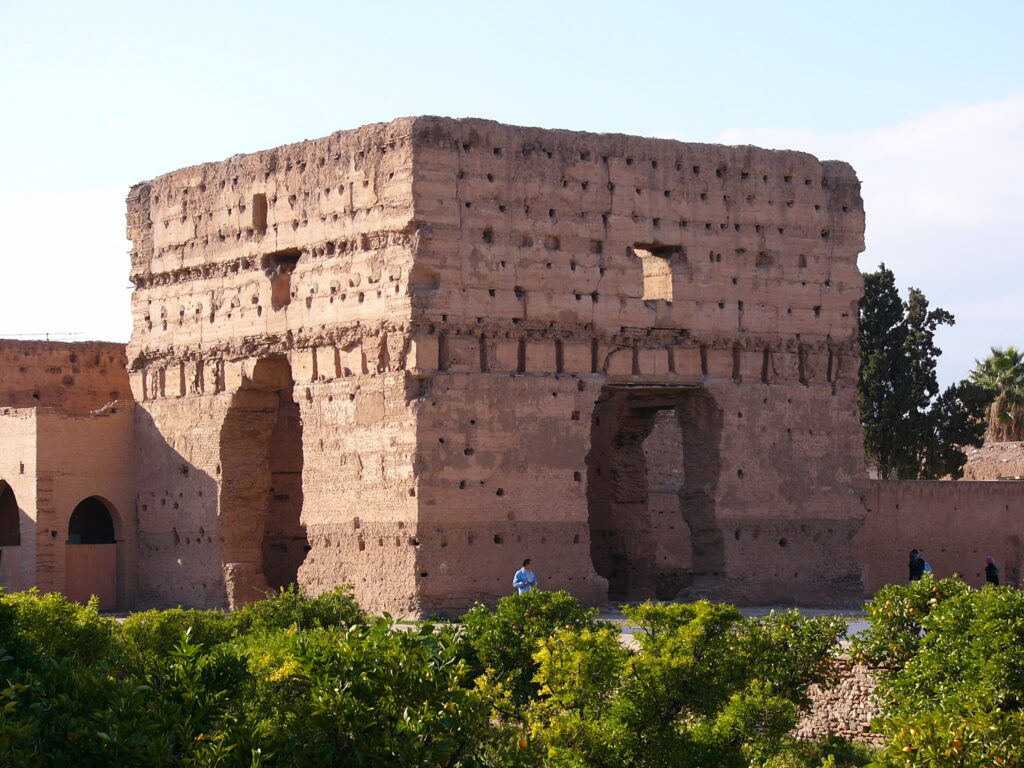
What to See in El Badi Palace
The El Badi Palace is like a history museum in Marrakech! Here is are the top 7 things to see when visiting:
- Moroccan Art and architecture: The ceilings are decorated with cool designs, and even the columns have shiny gold tops. The floors are black and white marble in a fancy pattern too.
- Walk on a work of art! The floors are covered in colorful mosaics, like giant puzzle pictures.
- Courtyard and Fountains: In the center, there’s a huge courtyard with a big pool and a super impressive fountain in the middle.
- Amazing rooftop view: Climb to the rooftop and look out over the entire city. You can see the red houses of Marrakech and even the mountains in the distance!
- Impressive Pavilions: Check out the Crystal Pavilion and the Audience Pavilion. They have cool dome roofs and fancy columns made from marble from Italy.
- Secret tunnels: Explore hidden passageways underground. They used to be jails, but now they have cool old stuff on display.
- The Minbar: See a super old and beautiful preacher’s stand (called a minbar) from a famous mosque. It’s made of wood and decorated with amazing carvings.
History everywhere! After El Badi palace, visit other cool historical sites nearby, like Saadian tombs, the Bahia Palace, Majorelle Gardens, and other things to do and see in Marrakech.
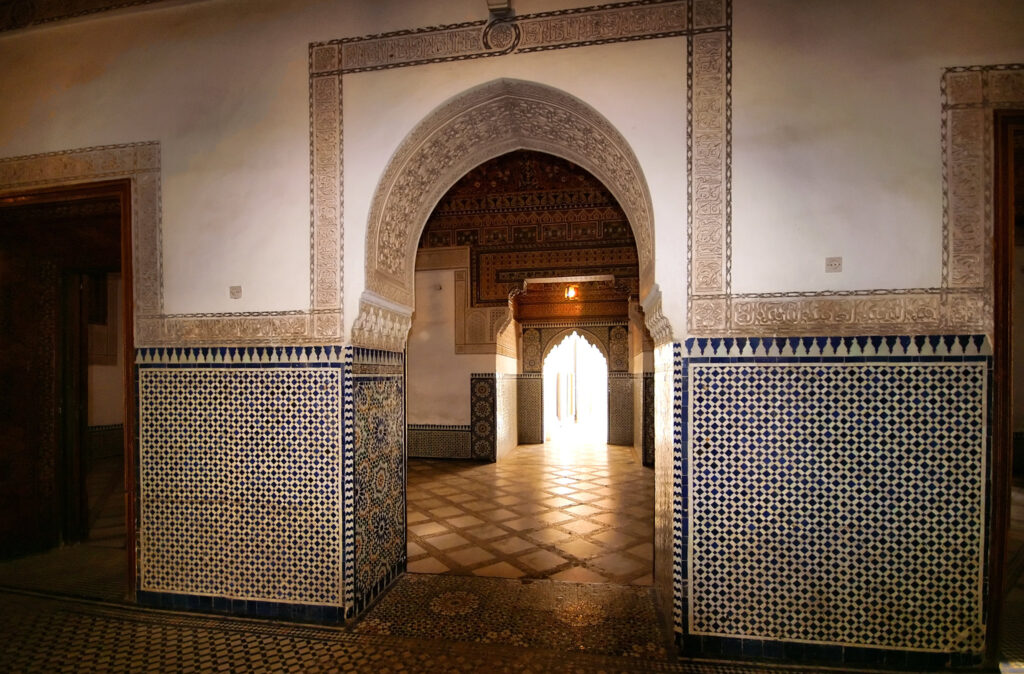
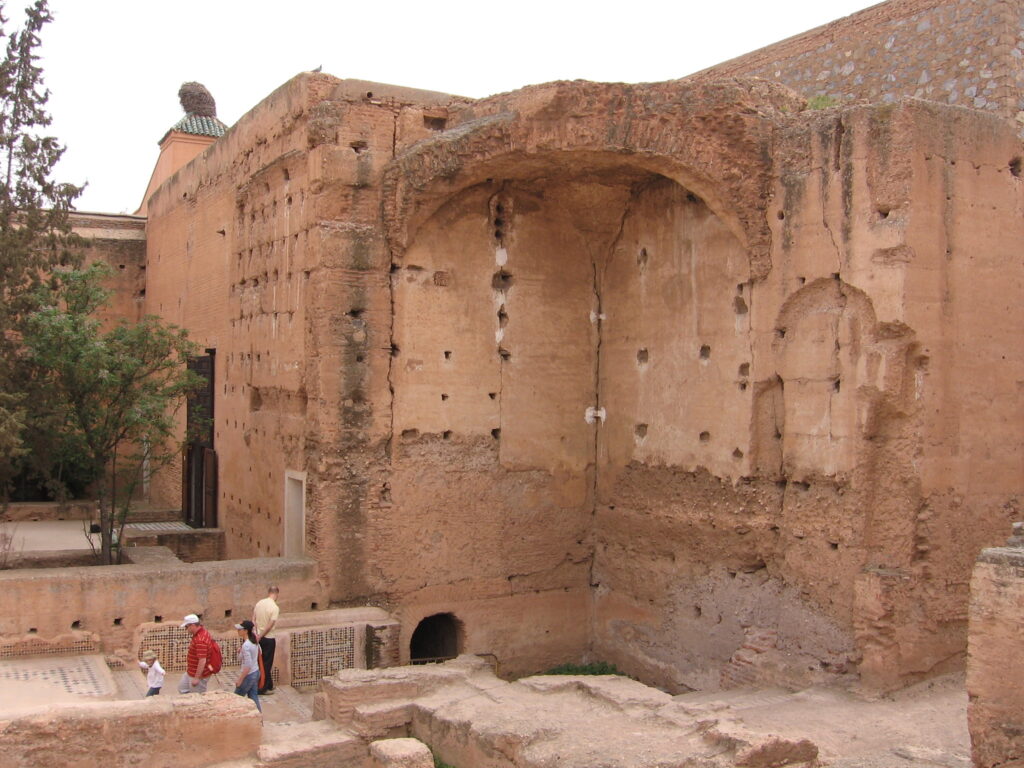
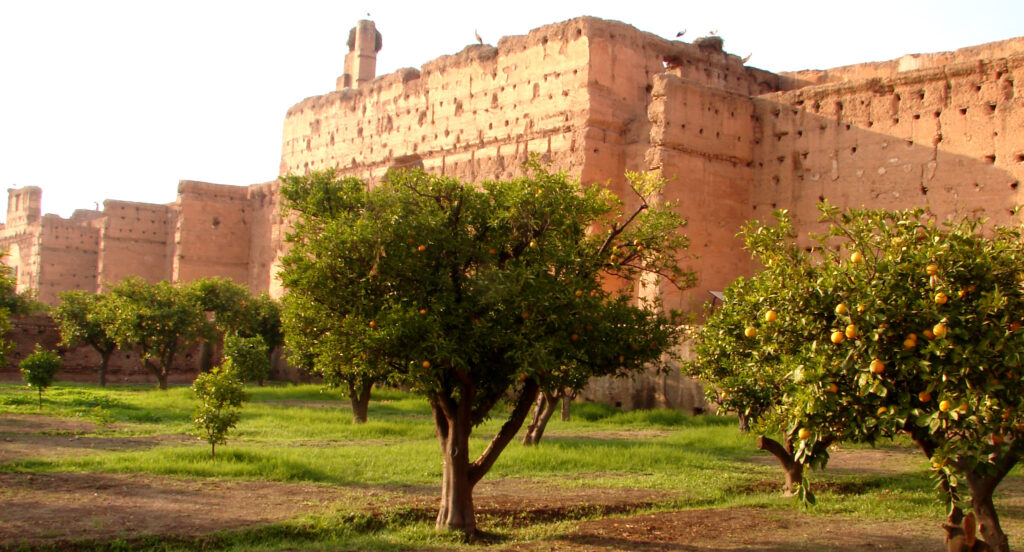
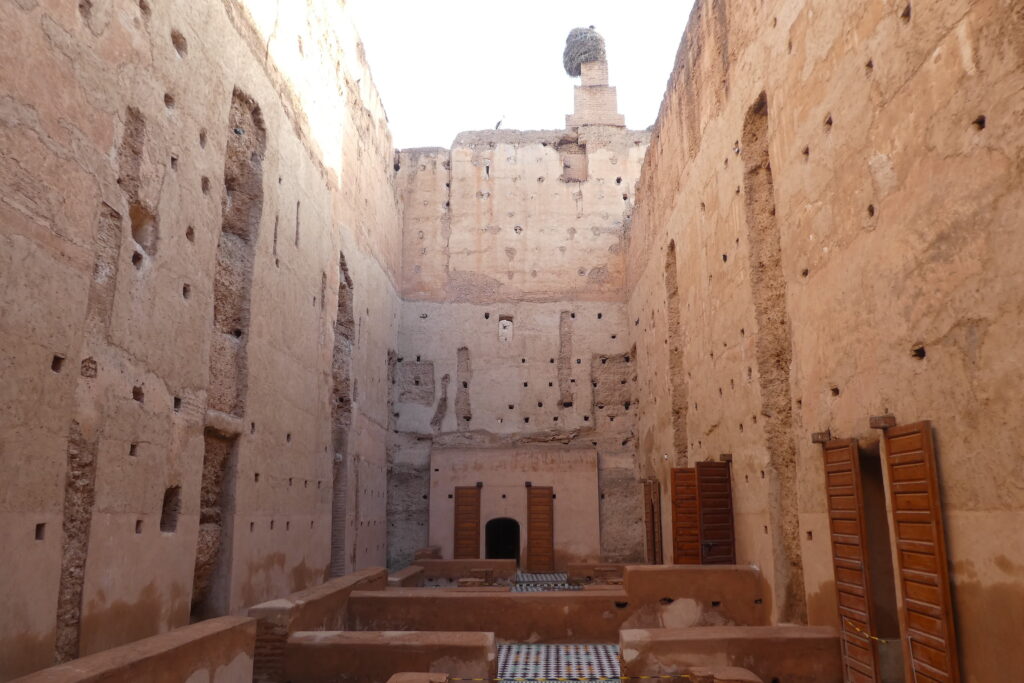
Opening Hours and Tickets of EL Badi Palace
El Badi Palace in Marrakech is open every day from 9 am to 5 pm, so you have plenty of time to check out the ruins and cool architecture. To be super sure of the hours (in case they change), look online or call the palace before you go.
The ticket to El Badi Palace is around 70 MAD, about €7. You can buy them right when you arrive at the entrance, or you can be a planner and buy them online beforehand. Visiting El Badi Palace is like going on a history adventure! Make sure you know when they’re open and prepare for a great time.
Is El Badi Palace worth visiting?
El Badi Palace is like a real-life history gem in Marrakech! Even though it is mostly ruined now, it is still an awesome place and worth visiting, especially if you love history, architecture, and art. Imagine walking through a fabulous courtyard with orange trees growing where fancy buildings once stood. You can almost picture how grand it must have been in the past! Climb the walls and see amazing views of the whole city of Marrakech.
Explore the old stables, secret rooms, and the surrounding buildings to get a feel for what palace life was like way back then.
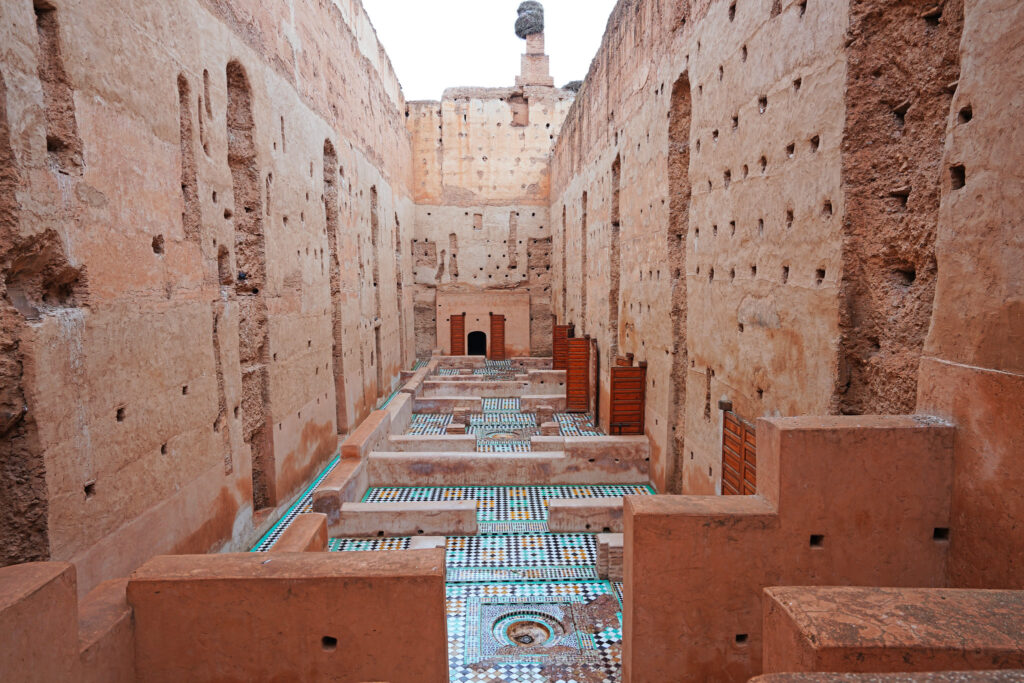

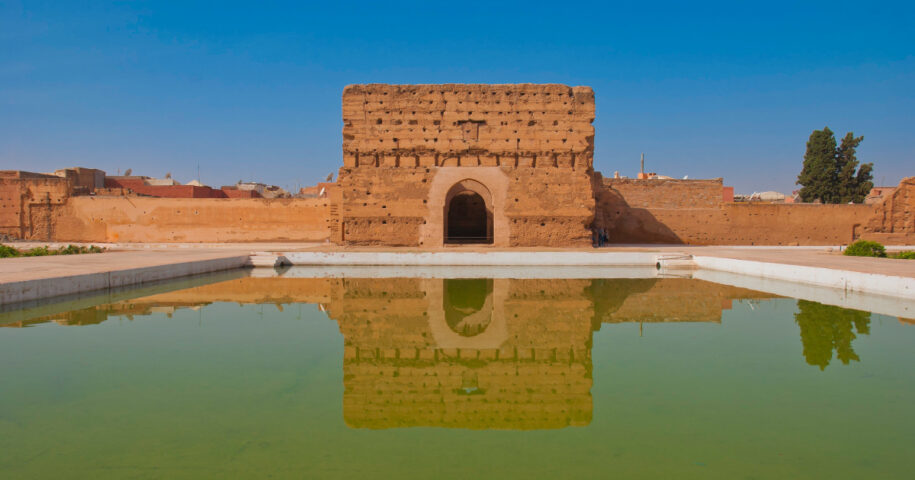
Leave a Reply